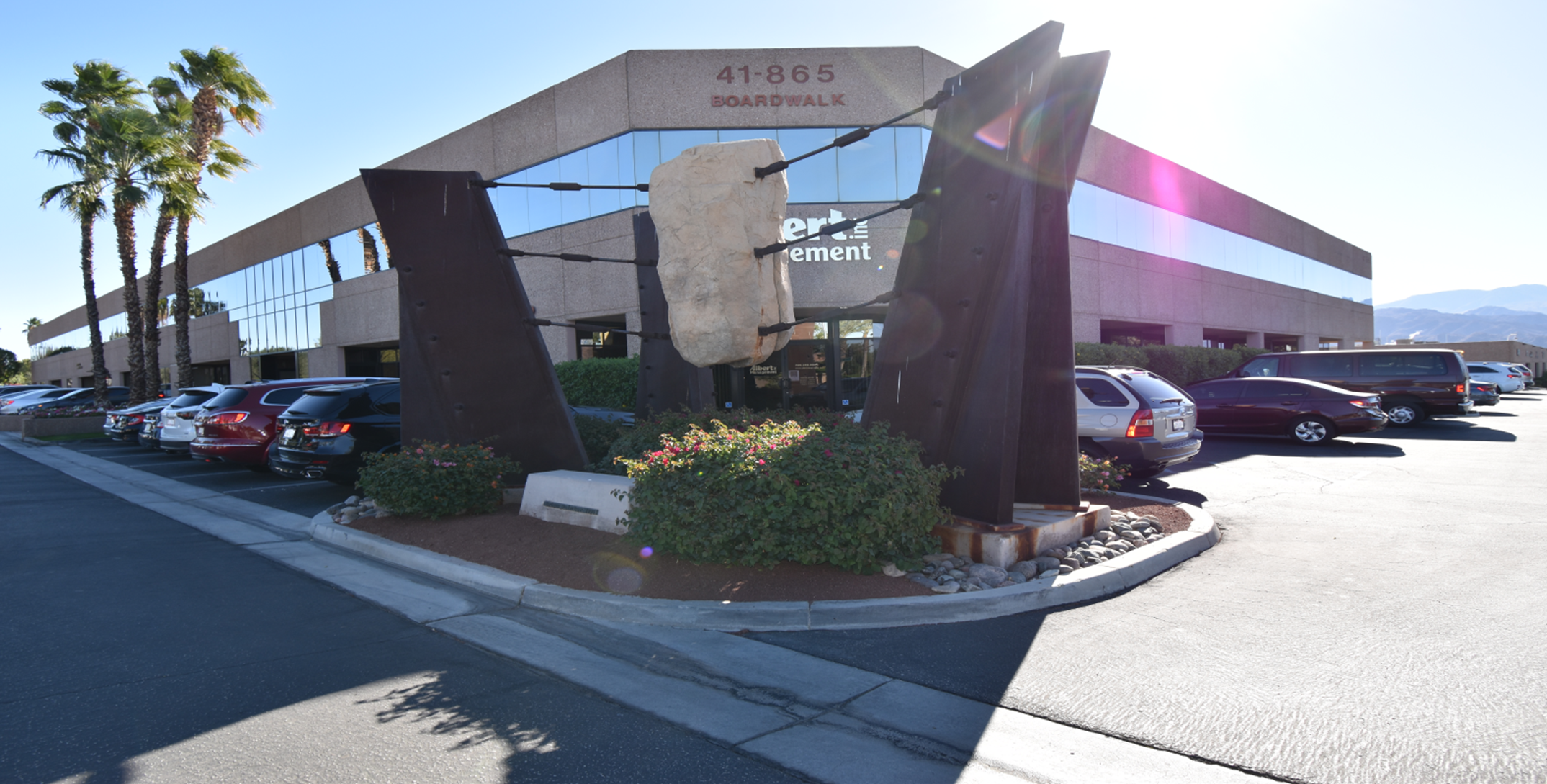The Greater Palm Springs office leasing market has begun a new year of hope and pragmatism after a very trying and confusing 2020 that had many local market participants scratching their heads. Dark windows and empty parking lots made things look perhaps worse than they were – some true vacancies of course, but also businesses closed by mandate or by choice due to the pandemic, some sporadically opening to some employees, only to close again as guidelines shifted.
So, for landlords and tenants and those of us brokers working to help both — 2020 was mostly a year best heaped onto the “forget” pile of history. Nonetheless, just as we bounced back after other “unprecedented” markets like the financial crisis of the late 2000s, market participants should take a few moments to recognize trends and perspectives from last year that may help better shape office leasing for the rest of 2021. With that hope in mind, these are my observations in the first quarter of the year.
Work from home is here to stay – but don’t worry
When the pandemic hit its hardest about a year ago, most businesses were forced to abandon the office and scramble to make things work. Most prominent in the evolution of the new work from home was video conferencing that has produced countless parodies and memes decrying the “Zoomification” of the business world. It was the best we had but, to say the least, it hasn’t worked well for many if not most companies and workers.
Besides the ubiquitous marathon screen sessions, a common consensus is emerging that the general productivity and happiness of employees at home was similar – fine for some but not ideal for most.
So, when the pandemic does finally subside, the attitude toward work from home may only slightly change. The percentage of full-time work from home employees may rise a bit, but the remainder of the workforce is ready, even anxious, to get back to the physical workplace full time or close to it. The office needs to be there for them, but some employees may still flex from home from time to time.
For those who doubt, we need only remind ourselves of the others at home with us doing their work remotely: our children. Their schooling from home is a close parallel to our working from home. We are both completely oversaturated in screen time and miss the community interaction with people other than our family unit. Just as our kids need to get back to in person schoolwork, we’re ready to get back to the office, however that may look.
Downsizing, reshaping and tenant improvements
To be fair, the trend of office size reduction was underway well before COVID arrived, but it undoubtedly increased some since then. In general, office tenants have determined that some areas and layouts are simply wasteful compared to a few years ago. Lobbies, conference rooms and kitchen/break areas have gotten smaller and some eliminated altogether. Private offices are getting smaller as well and some even demolished and replaced by semi-private cubicles.
Interestingly, and perhaps an outlier example, one organization that remained open during the last year noted that its employees enjoyed having private offices that once were considered outdated. The spaces helped the employees feel safer in their workspace and the doorways, which were usually kept open, did seem to act as a natural stopping point for fellow workers coming by to collaborate or just chat.
In addition, a few leasing agents have noted that some renewal tenants and new tenants have found that their space footprint has gone unchanged after COVID. The total workers planned for coming into the office each day is less due to work at home, but the target of square footage per person in the office has increased because of social distancing. In essence it’s a wash.
But when tenants are set on downsizing their space, landlords are traditionally reluctant, but the risk of losing a tenant to a competing building is causing most owners to get out the floor plan and start marking it up. The alternative of offering financial incentives to tenants to keep the space as-is is still an option, but not a close second.
With delinquencies and move outs increasing, landlords have their work cut out operating a building with fairly fixed debt, taxes and operational expenses, so the importance of top line income is paramount. One local landlord recently stated, “In a negotiation where discussion pivots between less space at a more attractive lease rate or vice versa, keeping the highest lease rate wins with very few exceptions.” In essence, price stability outweighs occupancy rate in the long term. He added, “There will be swings in vacancy, but wild swings in lease rates hurt a building’s stability and desirability in the market. I don’t want mine to be a discount building.”
Tenant improvements are more important than ever in most lease negotiations, and despite the long-term budget constraints above, tenant improvements are more generous for tenants than they have been in years. Landlords still have capital sources for funding space construction and by keeping it as an up-front cost, the expense has less affect on the building’s value down the road than lower lease rates.
Despite tenants’ design preference between open space or private office, modern shared workspace or traditional perimeter offices, they are beginning to ask for the office to feel more “homey” whenever possible. Leasing agents have confirmed this term, or close to it, has come up recently from a financial advisory firm, an insurance agency, and a home health care company – none of which were using their spaces in similar ways.
At first this seemed curious coming at the hopeful end of the recent lengthy work from home regimen, but perhaps it makes perfect sense. If we are going to leave the comfort of our home and re-enter the office building, why not take it with you? By integrating more office plants, artwork, area rugs and natural light, the workplace can be the best of both worlds, or as one of the tenants put it: “down to business and down to earth.”
Wellness, air quality and sanitation
Whether a building is a Class A lobby building with shared spaces and amenities or one of our more common low-rise direct-entry office buildings, the increased demand for high air quality, sanitation and cleaning protocols is here to stay.
Employees undoubtedly want and need to feel as safe as they can and will look to their employer to provide that higher protection within office space and their landlords to provide it in common areas of larger office buildings.
This means everything from modernizing HVAC systems with HEPA or similar filters, employing cleaning protocols throughout the day for surface cleaning, door handles, and elevator buttons, providing sanitation stations and, yes, continuing to encourage safe distancing wherever possible.
This new norm is anything but a bother or expense to be tolerated. Rather in addition to all the other office practices reshaped by the pandemic, strong wellness measures are part of the new norm; a new norm that is very welcome as we all look to getting back to work soon.
Finally…
Market forces are not like the weather, simply rolling over us as we try to make sense of it and describe it. Markets are dynamic and complex because they are subject to all of us acting and reacting, thinking and feeling. It’s good to remember this from time to time.
There will never be a shortage of highly analytical, statistical articles we can reference for market data and charts, and that’s a good thing too. But perhaps a bit better knowing we do play a role in shaping those charts as much as we shape ourselves. And, just like the weather, the market is certain to change again very soon and call for another fresh look.
Brian Ward is President of Ward Real Estate Associates, Inc. based in Palm Desert. With over 25 years of senior level commercial real estate experience at firms such as CBRE and Lee & Associates, Brian continues to be a leader in the sales and leasing of office and industrial properties in the Greater Palm Springs area. He can be reached at (760) 333-7878 or [email protected]




